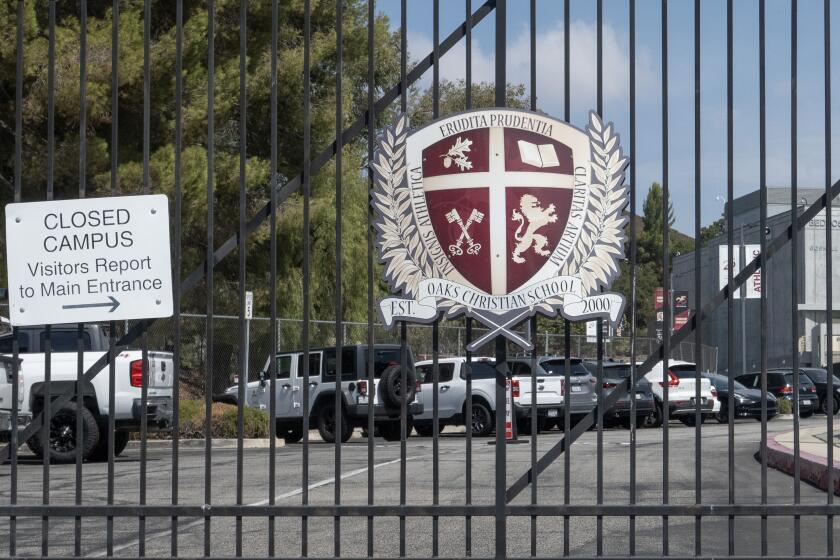Proposition A Would Give Community Colleges Crucial Resources
The movie “Field of Dreams” had a classic line: “If you build it, they will come.” Kevin Costner’s character carved a beautiful baseball diamond in the middle of an Iowa cornfield, risking his livelihood and farm. In the film’s closing scene, people did come to his ballpark to watch America’s pastime and fulfill his dreams.
The San Fernando Valley faces a similar story line: Will we build and develop the quality school infrastructure we need for our community colleges? Will we support Proposition A so that students in our area can follow their dreams?
We need to support Proposition A.
There is one critical difference between the movie and the bond vote April 10. We know the students are already coming. Look at the recent census data for our state and region; we are growing and growing fast.
Currently 110,000 students attend the nine community colleges in the Los Angeles Community College District. Estimates for the 2005 school year--just four years from now--are that more than 132,000 students will be enrolled in these schools.
As an employer, parent and taxpayer in the Valley, I support Proposition A and urge you to vote yes as well.
*
The $1.2-billion bond measure would vastly improve the sprawling district’s aging classrooms and deteriorating buildings.
Valley College, Mission College and Pierce College represent the first educational and perhaps career-enhancing step for many students, young and old. From the diversity of the schools, where nearly 80% of students are minorities, to the fact that one in four students was raised in a home in which parents did not have a high school education, these schools change lives and make for a better Los Angeles.
The success of these schools is most demonstrated by the fact that 60% of University of California and California State University graduates attended community colleges. Valley, Mission and Pierce are the educational stepping stones for people in the Valley.
But what kind of foundations are these institutions built on? Sadly, it is often cramped, portable classrooms; labs lacking technology and basic research tools; rooms with leaking pipes and no heat or air-conditioning; and libraries without networked computers or adequate books.
These schools are tremendous assets for our communities, but unfortunately we have not maintained their infrastructure.
By supporting Proposition A, we can transform these community colleges and provide them with the buildings, technology and physical space they need to succeed and meet the growing student enrollment. The bond would address the most urgent and basic repair needs on the campuses to give students safe, clean and well-equipped classrooms.
*
However, Proposition A is not a blank check. An independent agency would audit the spending and release results for all to review. An independent oversight committee--comprised of local residents, taxpayers, seniors, business and community leaders and students--would guarantee that the bond money was allocated as promised. And no funds would go to salaries.
Proceeds would go for the construction of technology centers to train students in computer and high-tech careers; money would be allocated for the construction of classrooms designed to train health care workers, and money would be spent on enhancing security systems on campuses by adding lights and gates.
The changes at these colleges and the investment in these students would come at a price--$14.53 per year for each $100,000 of property valuation. When you consider how many lives these schools impact every day, this is an investment we should make and a proposition we should support.
For about the money you spend on coffee in two weeks, you can support the growth of our community colleges, the advancement of our residents and the development of our communities.
More to Read
Sign up for Essential California
The most important California stories and recommendations in your inbox every morning.
You may occasionally receive promotional content from the Los Angeles Times.










